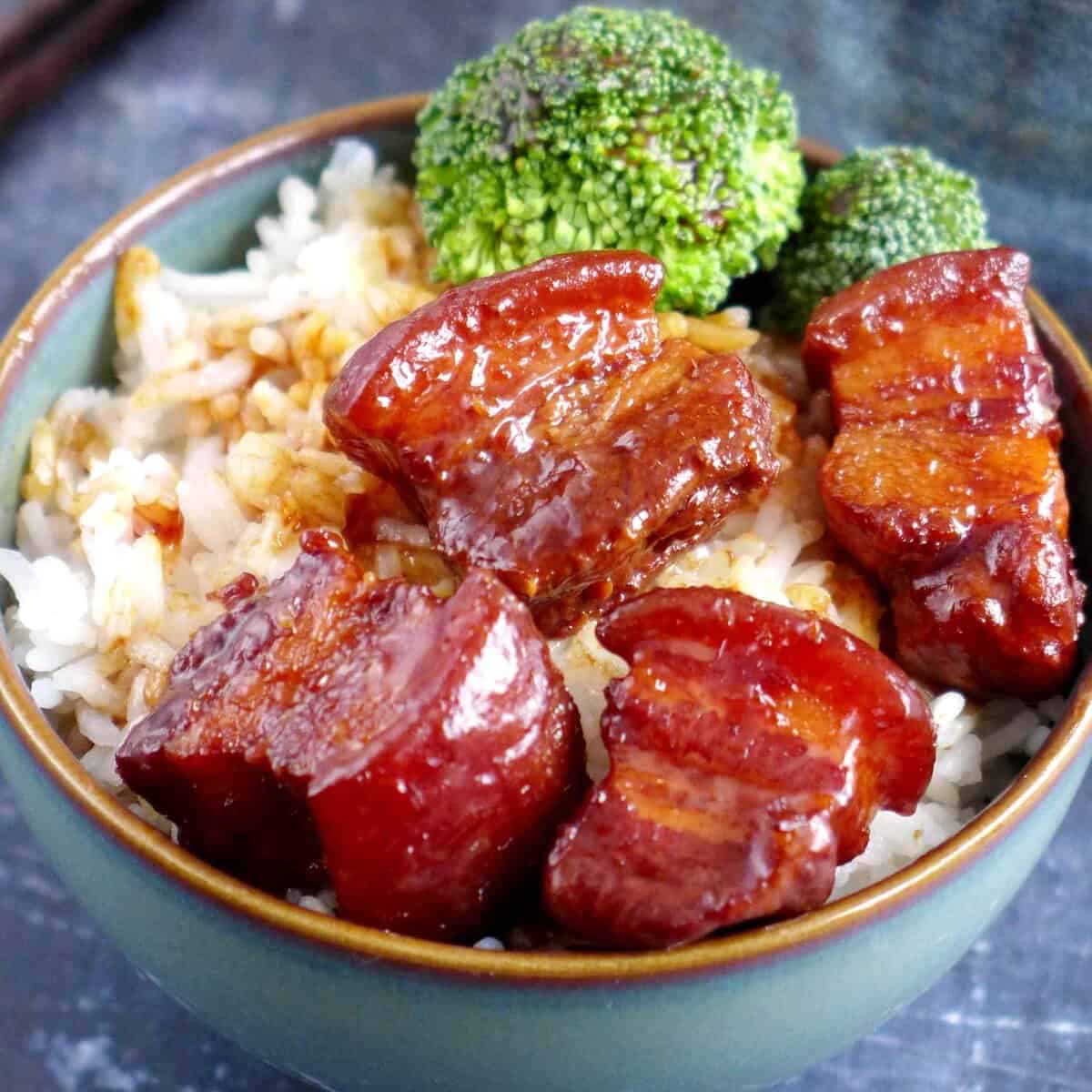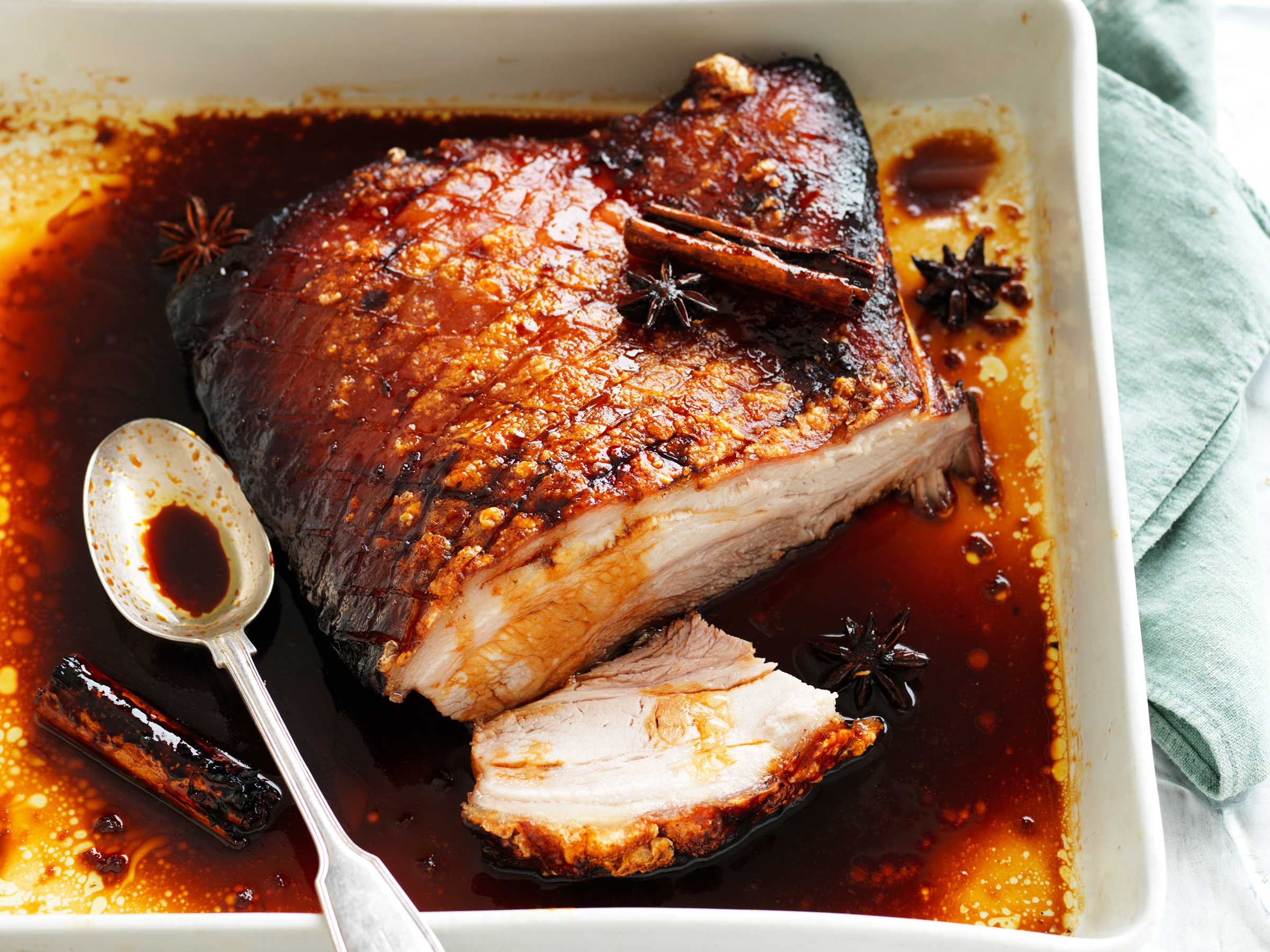Embark on a culinary adventure with our guide to steaming pork belly Chinese style. This delectable dish, a staple in Chinese cuisine, tantalizes taste buds with its tender meat, crispy skin, and aromatic flavors. Join us as we explore the secrets behind this culinary masterpiece, from selecting the perfect ingredients to mastering the steaming techniques.
Prepare to savor the richness of Chinese culinary traditions as we delve into the art of steaming pork belly. Discover the essential ingredients that create an explosion of flavors, the techniques that transform ordinary pork into an extraordinary delicacy, and the accompaniments that elevate the dining experience to new heights.
Steaming Techniques for Pork Belly
Steaming pork belly is a cooking method that involves exposing the meat to hot steam, resulting in tender and flavorful results. This technique offers several advantages over other cooking methods, including:
- Preserves moisture, leading to a juicy and succulent dish.
- Retains nutrients and flavors within the meat.
- Reduces the risk of overcooking and drying out the pork belly.
Methods for Steaming Pork Belly
There are various methods for steaming pork belly, each with its own advantages and drawbacks:
Bamboo Steamer
Using a bamboo steamer is a traditional Chinese method that involves placing the pork belly on a steaming rack above a pot of boiling water. The steam rises through the bamboo and cooks the meat evenly. This method requires a specific steamer and a heat source that can maintain a steady boil.
Oven Steaming
This method involves using a roasting pan with a rack and adding water to the bottom. The pork belly is placed on the rack, and the pan is covered with foil. The oven is set to a low temperature, and the steam created in the pan cooks the meat.
Oven steaming is convenient and allows for larger batches of pork belly to be cooked simultaneously.
Ingredients and Seasonings for Chinese-Style Pork Belly
Creating an authentic Chinese-style pork belly dish requires a specific set of ingredients and seasonings that work together to enhance the flavor and texture.
Essential Ingredients
- Pork belly: Choose a piece of pork belly with a good balance of meat and fat. The fat will render during cooking, resulting in a tender and juicy pork belly.
- Ginger: Fresh ginger is commonly used in Chinese cuisine and adds a warm and spicy flavor to the pork belly.
- Garlic: Garlic is another essential ingredient that provides a savory and aromatic flavor.
- Soy sauce: Soy sauce is a key seasoning in Chinese cooking and adds a salty and umami flavor to the pork belly.
- Hoisin sauce: Hoisin sauce is a thick, sweet, and savory sauce that adds a rich flavor to the pork belly.
- Five-spice powder: Five-spice powder is a blend of spices commonly used in Chinese cooking and adds a warm and aromatic flavor to the pork belly.
Marinating the Pork Belly
Marinating the pork belly before cooking is an important step that helps to tenderize the meat and infuse it with flavor. The marinade typically consists of a combination of soy sauce, hoisin sauce, five-spice powder, ginger, garlic, and other seasonings.
The pork belly should be marinated for at least 4 hours, or overnight if possible.
Preparation Methods
Before steaming, preparing the pork belly enhances its flavor and texture. Scoring and rubbing with salt are crucial steps.
Scoring the Pork Belly
Scoring the pork belly involves making shallow cuts across the skin, creating a diamond or crosshatch pattern. This allows the heat and seasoning to penetrate deeper, resulting in crispy skin. To achieve maximum crispiness, ensure the cuts are shallow and evenly spaced, about 1/4 inch apart.
Rubbing with Salt
Rubbing the pork belly with salt helps draw out moisture, enhancing the flavor and promoting a crispy skin. Use coarse salt for better adherence and penetration. Apply the salt evenly over the entire surface, including the scored skin. Allow the salt to rest for at least 30 minutes before steaming, allowing time for the salt to work its magic.
4. Steaming Time and Temperature

Achieving tender and flavorful pork belly requires precise steaming time and temperature. The optimal steaming time ranges from 45 to 60 minutes per pound of pork belly. Longer steaming times result in fall-off-the-bone tenderness, while shorter times yield a firmer texture.
Monitoring the internal temperature of the pork belly ensures doneness. Insert a meat thermometer into the thickest part of the meat, avoiding touching any bones. The ideal internal temperature for fully cooked pork belly is 145 degrees Fahrenheit (63 degrees Celsius).
Tips for Monitoring Internal Temperature
- Use a high-quality meat thermometer for accurate readings.
- Insert the thermometer deep into the meat, but avoid touching any bones.
- Allow the thermometer to remain in the meat for at least 15 seconds before reading the temperature.
- If the internal temperature is below the desired level, continue steaming for short intervals, checking the temperature frequently.
Sauces and Accompaniments
Traditional Chinese sauces elevate the flavors of steamed pork belly, adding complexity and richness to the dish.
Soy Sauce-Based Sauces
Soy sauce is a versatile condiment that forms the base of many Chinese sauces. It adds a salty, savory flavor to pork belly.
Classic Soy Sauce Dipping Sauce
Combine soy sauce, rice vinegar, sesame oil, and a touch of sugar for a simple yet flavorful dipping sauce.
Hoisin Sauce
A thick, sweet, and savory sauce made from fermented soybeans, hoisin sauce complements pork belly’s richness.
Other Sauces
Black Bean Sauce
Fermented black beans create a robust, slightly spicy sauce that pairs well with pork belly.
Oyster Sauce
A thick, flavorful sauce made from oyster extract, oyster sauce adds a umami-rich sweetness to pork belly.
Accompaniments
Accompaniments enhance the dining experience by providing contrasting flavors and textures.
Rice
Steamed rice is a classic accompaniment to pork belly, soaking up the flavorful sauces.
Vegetables
Steamed or stir-fried vegetables, such as bok choy or Chinese broccoli, add a refreshing crunch and balance the richness of the pork belly.
Presentation and Serving
Steamed pork belly is a visually appealing dish that can be presented in a variety of ways to enhance its aesthetic appeal.
Garnishing and Plating
Garnishing steamed pork belly with fresh herbs, such as cilantro or scallions, adds a touch of color and freshness to the dish. Additionally, sliced cucumbers or radishes can be arranged around the pork belly to create a visually appealing contrast.
When plating the pork belly, it is recommended to cut it into bite-sized pieces and arrange them neatly on a serving platter.
Traditional Chinese Serving
In Chinese cuisine, steamed pork belly is traditionally served with a dipping sauce, such as a soy sauce-based sauce or a hoisin sauce. The pork belly can also be accompanied by steamed rice or vegetables, such as bok choy or Chinese broccoli.
Final Thoughts

Our journey into the world of steamed pork belly Chinese style concludes with a tantalizing summary of the culinary delights we’ve encountered. We’ve explored the intricacies of steaming techniques, the symphony of flavors created by traditional Chinese seasonings, and the importance of presentation in showcasing this culinary masterpiece.
Armed with this newfound knowledge, you’re now equipped to recreate this delectable dish in your own kitchen, impressing your family and friends with your culinary prowess.
FAQs
What is the secret to achieving crispy skin on steamed pork belly?
The key to crispy skin lies in the preparation. Score the pork belly deeply, rub it generously with salt, and allow it to rest uncovered in the refrigerator for several hours or overnight. This process draws out moisture from the skin, allowing it to crisp up beautifully during steaming.
How long should I steam pork belly?
The steaming time depends on the size and thickness of your pork belly. As a general guideline, steam for 45-60 minutes per pound. Use a meat thermometer to ensure an internal temperature of 145°F (63°C) for medium-rare, 155°F (68°C) for medium, or 165°F (74°C) for well-done.
What are some traditional Chinese sauces that complement steamed pork belly?
A classic sauce for steamed pork belly is a combination of soy sauce, rice vinegar, sesame oil, and ginger. Other popular sauces include hoisin sauce, oyster sauce, and a sweet and sour sauce made with pineapple, ketchup, and soy sauce.
